Arriving in Baku from Aktau, in Kazakhstan, was like changing continents without crossing anything more than the Caspian Sea. In just one hour by plane, the landscape, the architecture, and even the pace of life were completely transformed.
I had just spent months traveling through Central Asia, with its vast steppes, dusty bazaars and more traditional lifestyle, and suddenly I found myself in a modern, bright city full of contrasts.
Baku is a curious mix: a capital city that combines glass skyscrapers and elegant avenues with stone alleyways and ancient minarets. It is the meeting point between East and West, where the Persian and Soviet legacies coexist with the futuristic ambitions of oil and gas.
In this post I'm going to tell you everything you can do in Baku, how to get around, what places you can't miss, and why this city surprised me so much.
I assure you that, if you dedicate a few days to it, you will understand its history, its energy and that unique personality that sets it apart from the rest of the Caucasus.
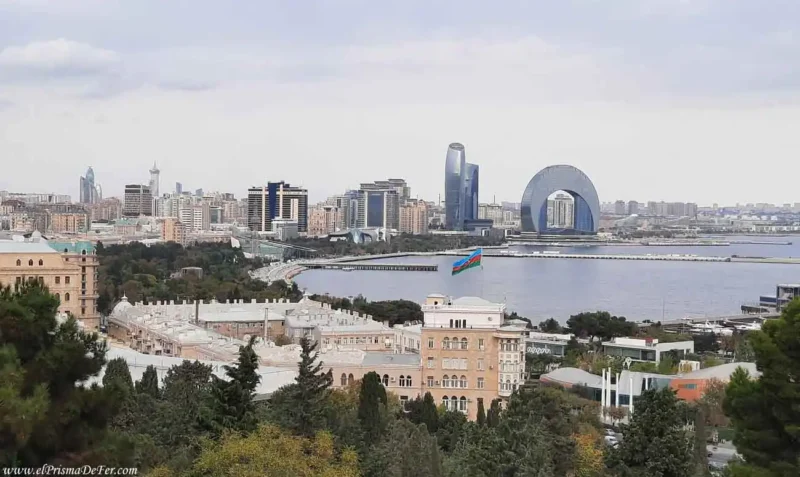
Table of Contents
Where is Baku located?
Baku is the capital of Azerbaijan and is located on the shores of the Caspian Sea, at the eastern end of the South Caucasus. It is situated practically at sea level (in fact, it is one of the lowest capital cities in the world, at about 28 meters below sea level) and surrounded by an arid and undulating landscape.

Its location historically made it a strategic point between Europe and Asia, being an essential part of the ancient Silk Road.

My visit to Azerbaijan was part of a grand journey along the ancient Silk Road. In this post you can learn more about the countries visited and how to do it all on your own.
Today it continues to occupy that role of cultural crossroads, with a mixture of Turkish, Persian, Russian and Muslim influences, which is reflected both in its gastronomy and in its architecture and its people.
How to get to Baku
Currently, Azerbaijan keeps its land and sea borders closed to the entry of travelers, so the only way to get to the country is by plane.
The main point of entry is the Heydar Aliyev International Airport (GYD), located about 25 km from the center of Baku. From there, you can take a taxi or a public bus that connects directly to the city.
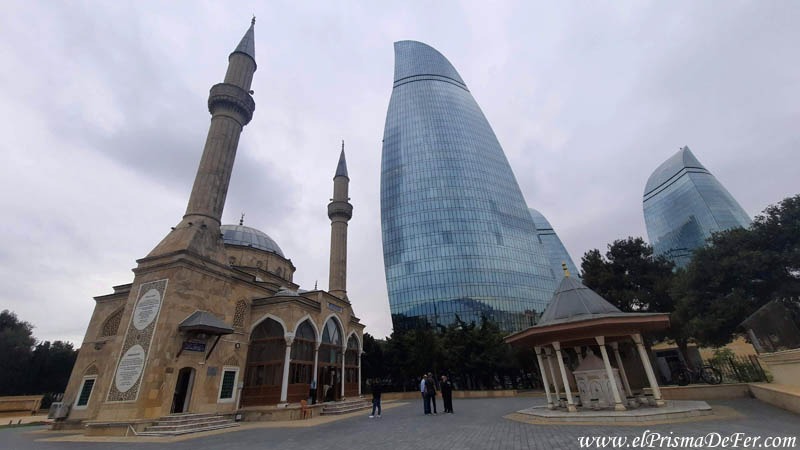
The national airline Azerbaijan Airlines (AZAL) operates direct flights from several cities in Europe, the Middle East and Central Asia. If you're coming from neighboring countries like Georgia, Turkey, or Kazakhstan, there are good flight connections and reasonable prices.
When the borders reopen, it will also be possible to enter by land from Georgia or Russia, or by sea from Kazakhstan, via the ferry that crosses the Caspian Sea between Aktau and Baku.
My first impressions of Baku
Arriving in Baku was a pleasant surprise. I came from Central Asia, and as soon as I set foot in the city, I felt a noticeable change; the atmosphere, the architecture, and even the pace of life seemed to mark the entrance to another continent.
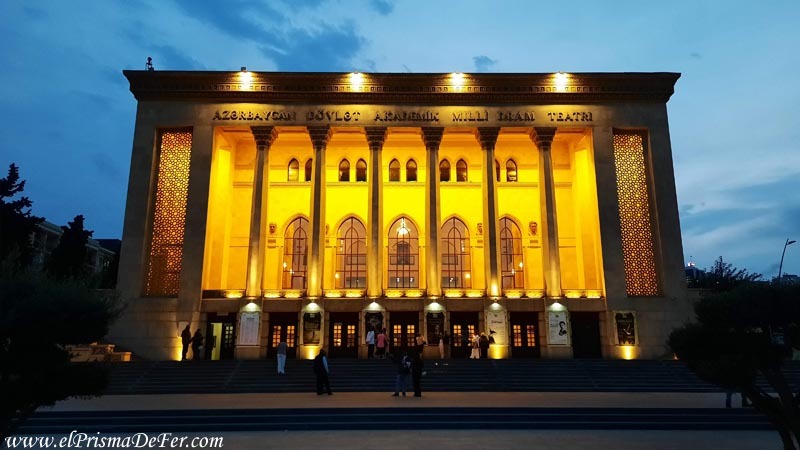
The capital of Azerbaijan is a mixture between the old and the modern. Its historic center, surrounded by perfectly preserved walls, is full of cobblestone streets, traditional houses, and an atmosphere that seems frozen in time.
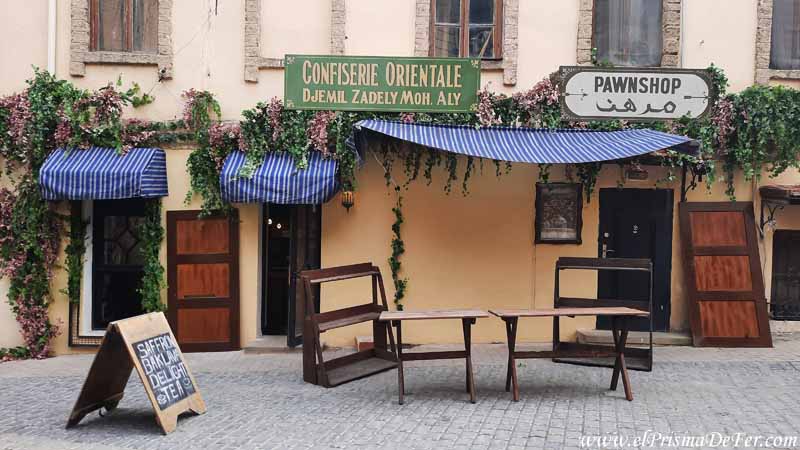
As I walked through the old town (Icherisheher), my mind drifted back centuries. Minarets, caravanserais, and carved wooden balconies tell the story of the ancient Silk Road.

But as soon as you step outside those walls, the city changes completely. Wide avenues appear, along with modern buildings and iconic structures like the Flame Towers, which dominate the skyline with their futuristic silhouette.

Furthermore, there are neighborhoods that could easily pass for areas of European cities, with elegant cafes, well-maintained parks and a very active urban life.
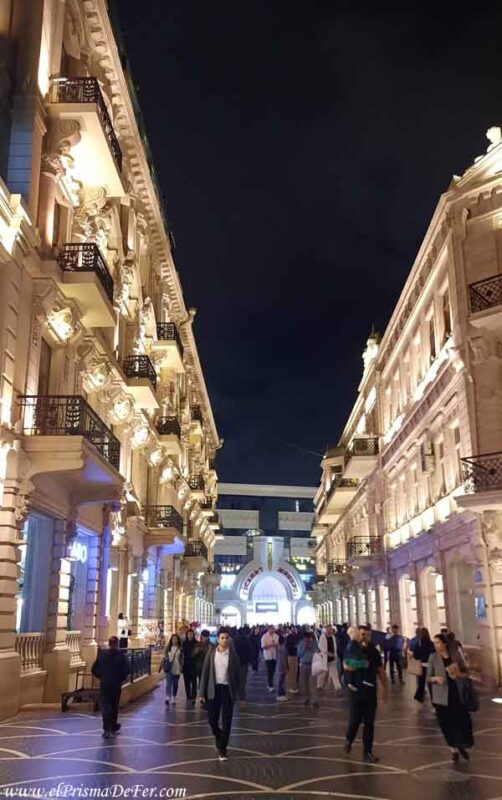
After coming from Kazakhstan and traveling across the steppe, Baku gave me the feeling of having arrived in Europe, without completely abandoning the exoticism of the Caucasus.
Map with the best things to see in Baku
What to see in Baku
The historic center: Icherisheher
The old town of Baku, known as Icherisheher, is the soul of the city. Enclosed by 12th-century walls, this labyrinth of cobblestone streets, traditional houses and ancient mosques is the spot where the original Baku was born, long before oil transformed it into a modern metropolis.
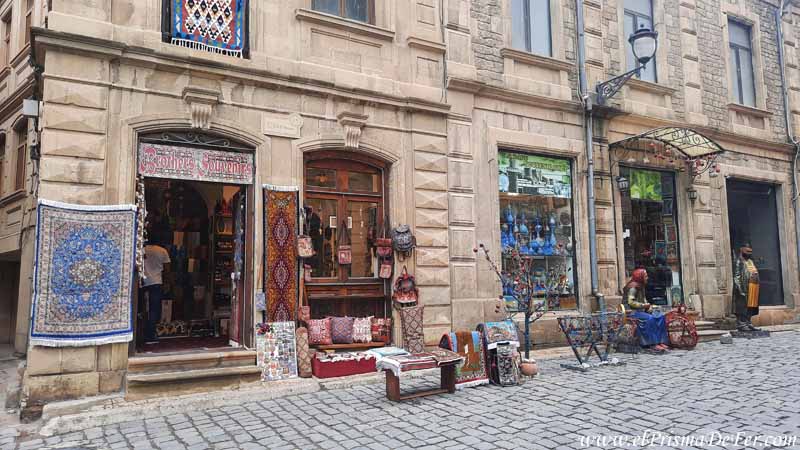
The carved wooden balconies, restored caravanserais, and bazaars are reminders of the city's mercantile past, when it was a key stop on the Silk Road.
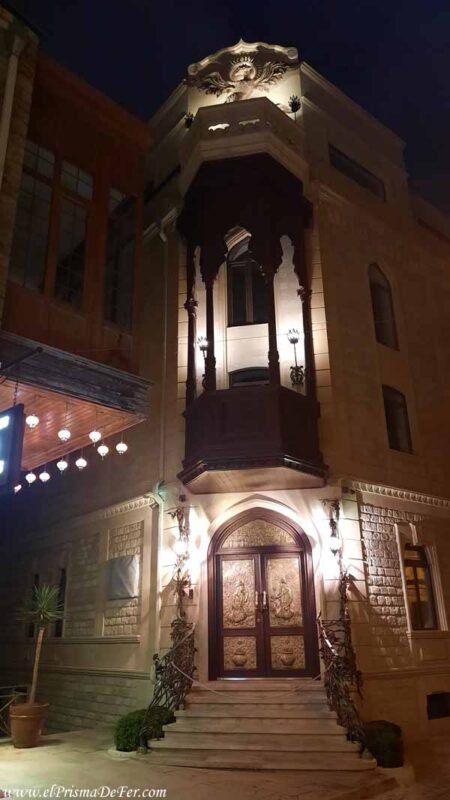

Within the old town are sites that tell their own story. Among the most notable are:
Maiden Tower
One of Baku's most recognizable symbols is the Maiden Tower, a cylindrical stone tower that rises from a large rock overlooking the Caspian Sea. It is about 30 meters tall, has walls up to 5 meters thick, and eight levels connected by narrow internal staircases.
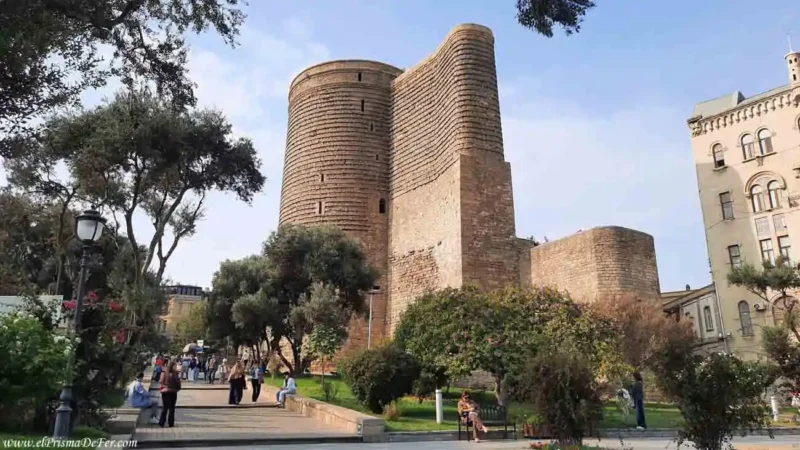
Its exact function remains a mystery; some believe it was a medieval defensive tower, while others maintain that it was an ancient fire temple from the Zoroastrian era.
But the truth is that its solidity and design kept it standing for centuries, making it an essential part of the defensive system of the walled city.
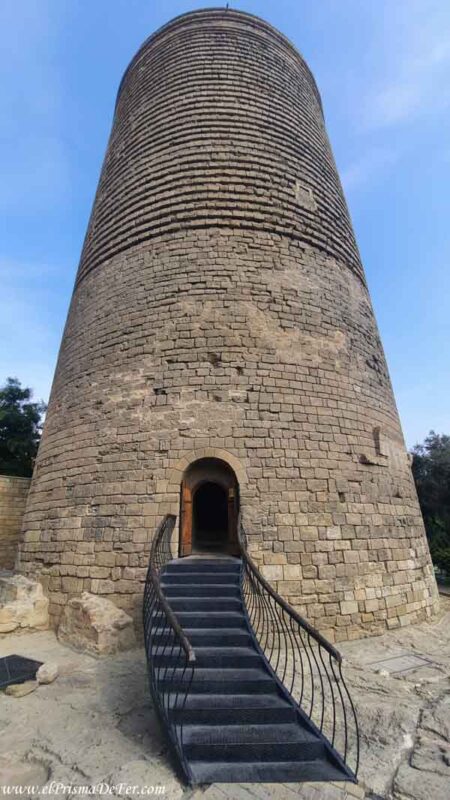
From the top you get panoramic views of the old town and the Caspian Sea.
- Entry to Maiden Tower costs around USD 9 and no advance booking is required.
Is it worth going inside the tower?
I didn't go in, as I thought the entrance fee was a bit high just for a nice view of the old town, but if it's within your budget, go for it.
Palace of the Shirvanshahs
Just a few steps away is the Palace of the Shirvanshah, a jewel of medieval Islamic architecture. This complex was the residence of the rulers of the ancient kingdom of Shirvan, and it preserves its courtyards, mausoleums, and ornately domed halls.
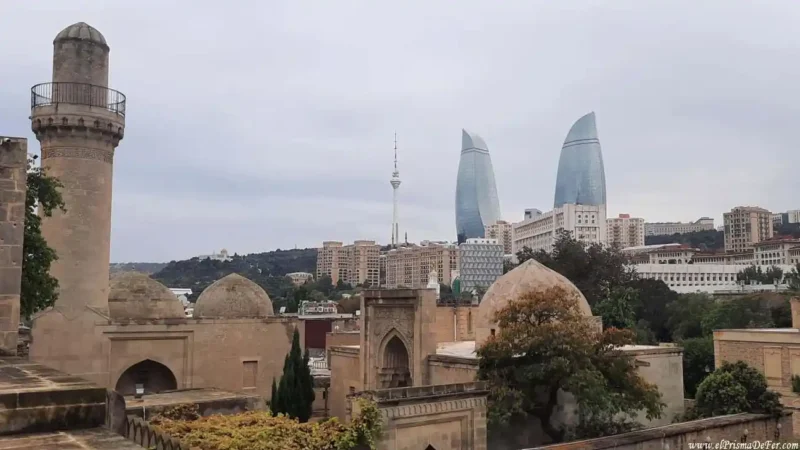
The complex consists of 9 main buildings, including the residential palace, the Divankhane (audience hall), the palace mosque, a hammam and the ovdan (water reservoir), arranged in three courtyards on steep terrain, giving it a unique structure without a regular geometric style.
Built with local limestone, the complex has suffered looting and changes of function over the centuries, for example during the wars between Persia and Turkey, and later with Russian domination, but since the 1950s it has become a museum and protected area.
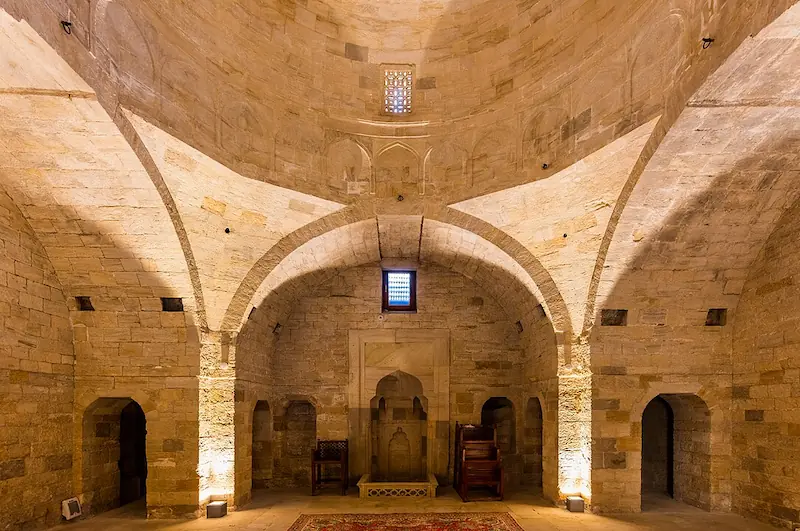
During your visit, don't miss details such as the religious inscriptions on the Divankhane portal, the carved stone decoration that combines plant and geometric motifs, and the views from the upper rooms overlooking the Caspian Sea. It will be an excellent way to understand Azerbaijan's history and its medieval architecture.
- The entrance fee to the Shirvanshah's Palace is also around USD 9. This can be verified on the official website, although the English translation is not working.
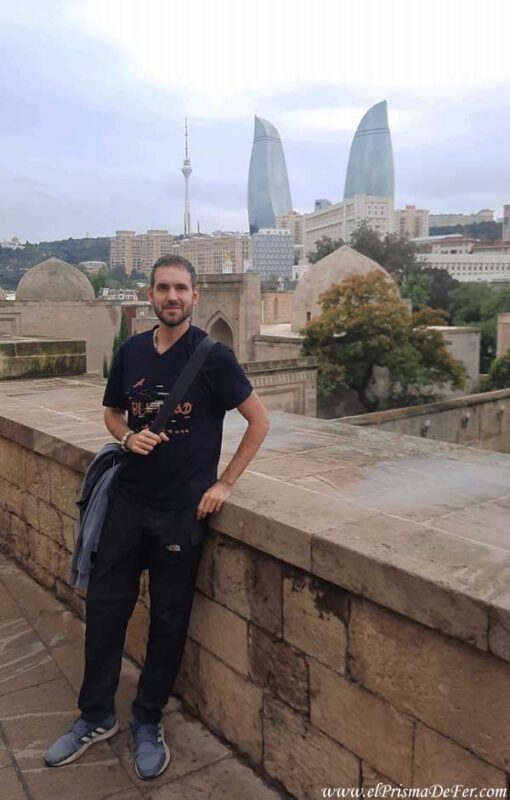
A corner made famous by a Soviet film
One of the most photographed corners of Icherisheher is Kichik Gala Street, where one of the most memorable scenes of the film “The Diamond Arm” (Brilliantovaya Ruka), a classic of Soviet cinema, was filmed.
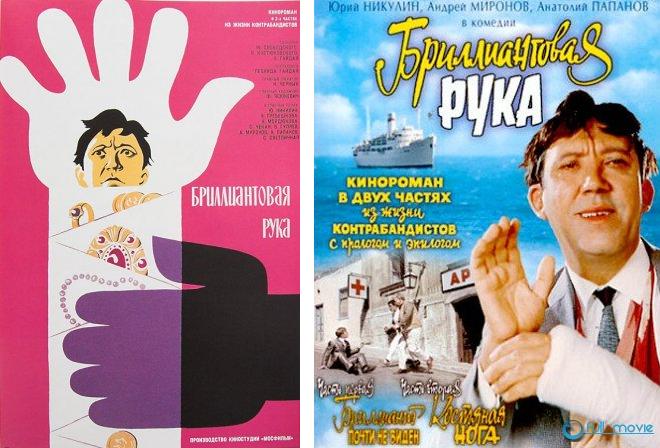
Since then, it has become an almost obligatory visit for locals and Soviet tourists, who stop to recreate the scene or take a picture in the same place.
Baku's coastal promenade
The Baku Boulevard borders the Caspian Sea and is the modern heart of local life. It's an ideal place to walk, rent a bike or simply sit and watch the sunset.
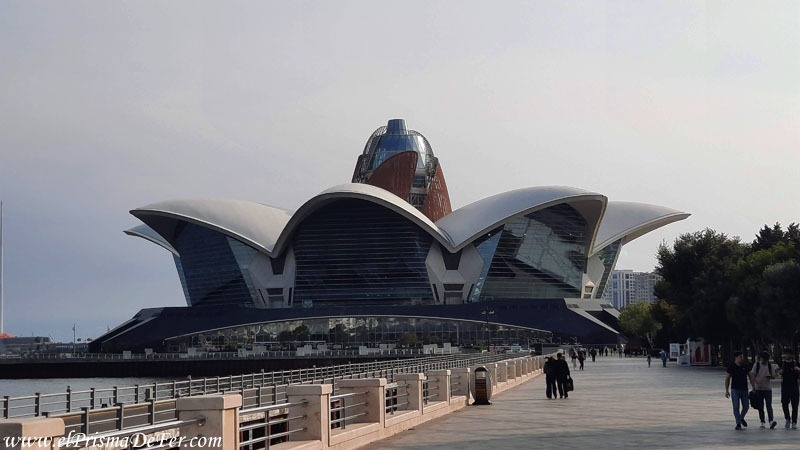
Along the promenade there are cafes, parks, fountains, the Park Boulevard shopping center and the Tapestry Museum, whose facade imitates a huge rolled-up tapestry: a work of art in itself, both inside and out.
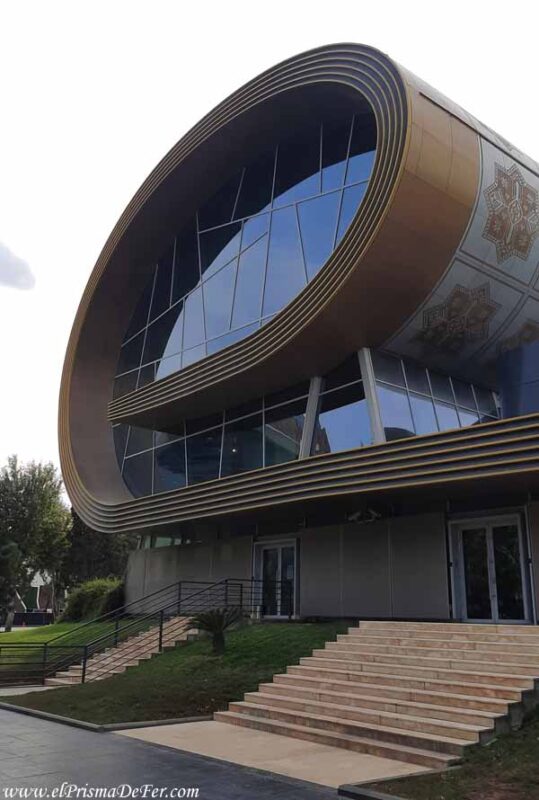
Inside, antique carpets from different regions of the country are on display, a showcase of Azerbaijani craftsmanship and symbolism.
Nearby is Azneft Square, a large square where several of the main avenues of the city center converge.

It's one of the city's most elegant and lively spots, surrounded by period buildings that reflect Baku's prosperity during the 19th-century oil boom. From there, you can easily access both the historic center and the waterfront.
Another curious corner of the boulevard is Little Venice, a small area with artificial canals and gondolas inspired by the famous Italian city.
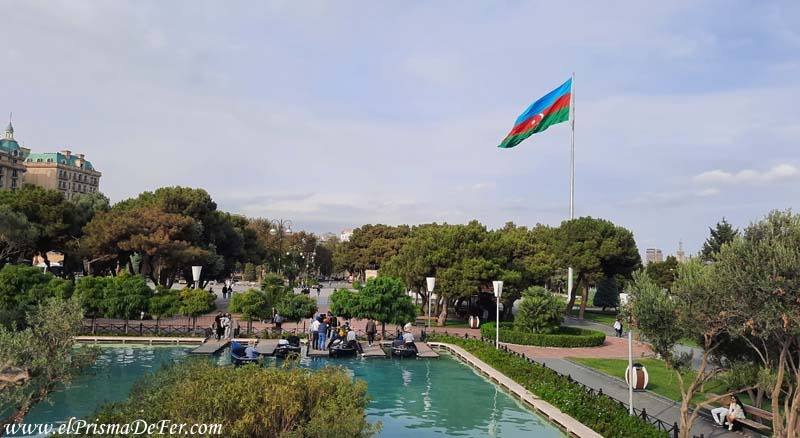
Although picturesque, I must admit I found it too artificial and somewhat out of place compared to the rest of the promenade, where the atmosphere feels more authentic. Even so, it's usually popular with local families and a photogenic spot for those who enjoy the contrasts the city offers.
From the promenade you can also take the funicular to the Flame Towers, or embark on a boat trip around Baku Bay, which offers a different perspective of the city and its lights reflected in the water, especially at nightfall.
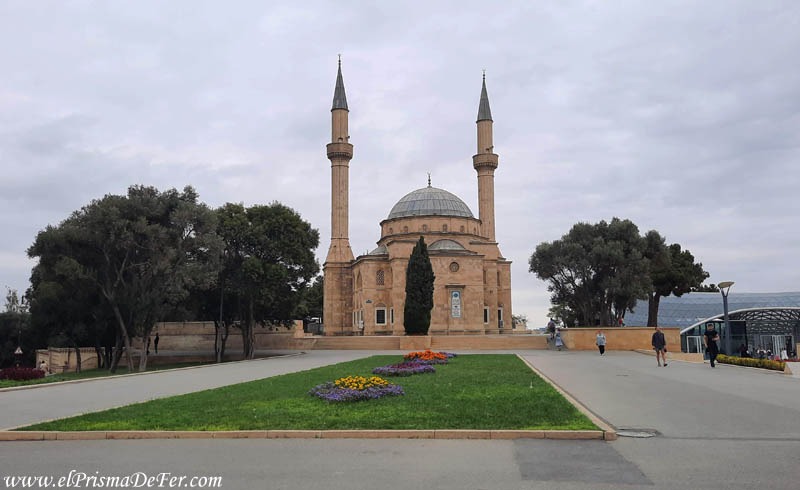
The Flame Towers
Outside the city walls, the contrast is striking. The Flame Towers are the modern icon of the city, three glass towers that represent tongues of fire, a symbol of the ancient Zoroastrian cult that originated in this region.
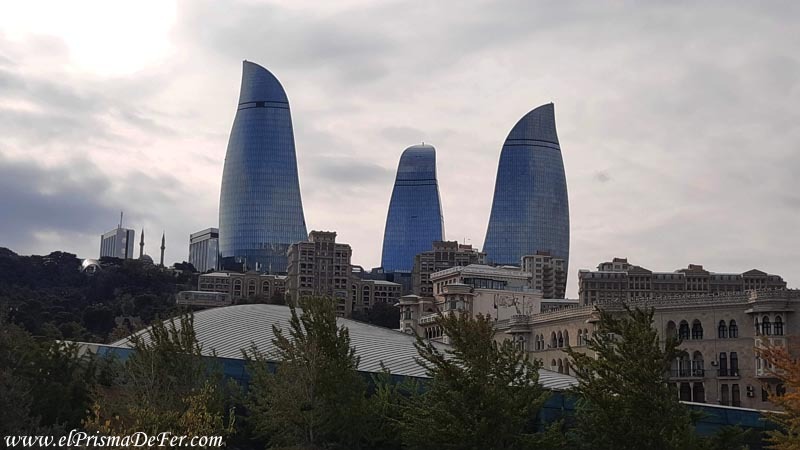
By day they reflect the sky, and at night they light up with LED animations that can be seen from almost anywhere in the city.
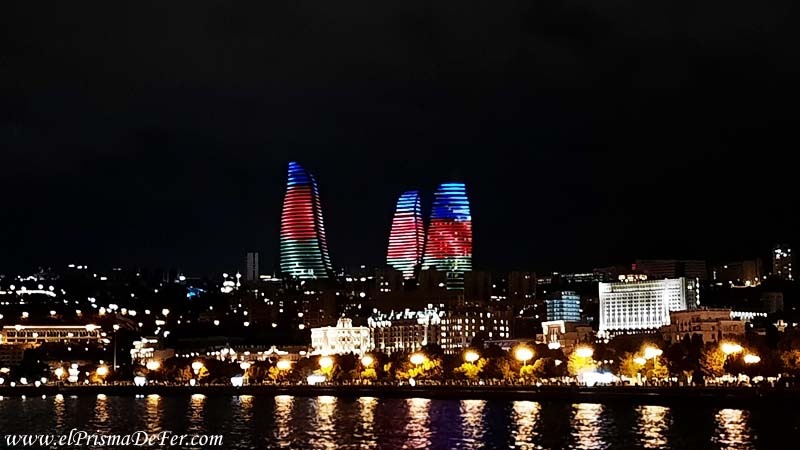
You can walk up or take the funicular from the coastal promenade to the hill where the towers stand, from where there are several viewpoints with panoramic views of Baku and the Caspian Sea.
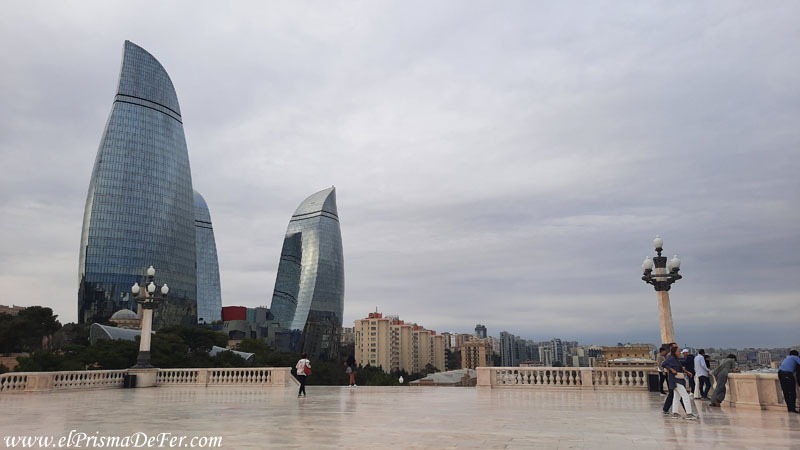
It is one of the best places to watch the sunset or enjoy the city lights at night.
Shahidlar Monument and the viewpoint overlooking the Caspian Sea
At the top of the hill, very close to the Flame Towers, is the Shahidlar Monument (or Avenue of Martyrs), a site full of history and symbolism for Azerbaijanis.

This memorial pays tribute to the victims of the tragic events of “Black January” of 1990 and to the soldiers who fell during the Nagorno-Karabakh war.
The atmosphere is solemn, and from there you have one of the best panoramic views of Baku and the Caspian Sea.
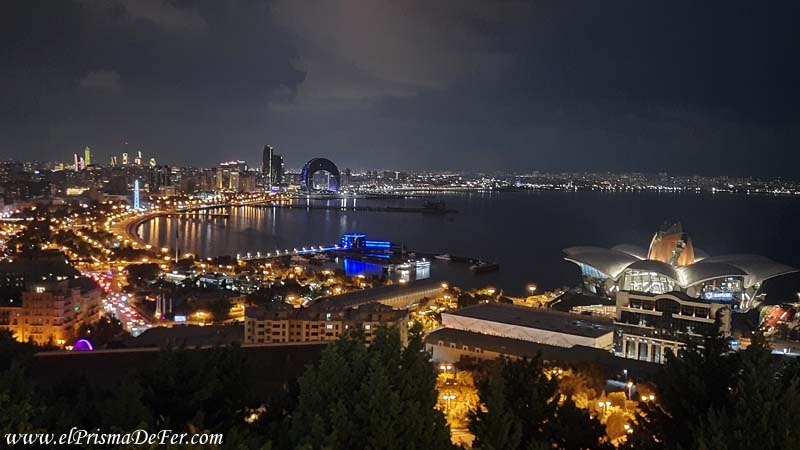
As evening falls, the city lights begin to come on and the view from the monument is simply spectacular.
Taza Pir Mosque
Not far from the center is the Taza Pir Mosque, one of the most important and elegant mosques in Baku.

Built in the early 20th century, it stands out for its yellow stone architecture, golden domes and interior ornamentation in white marble.
It was the first mosque in Azerbaijan built with local materials and its style blends traditional Islamic influences with details typical of the Caucasus.

Despite not being very large and only being open to Muslims, the Taza Pir Mosque is worth visiting for its surroundings.
It is surrounded by a park with viewpoints that offer very good views of the city, and, added to its elegant architecture, makes it an interesting place to visit and appreciate from the outside.
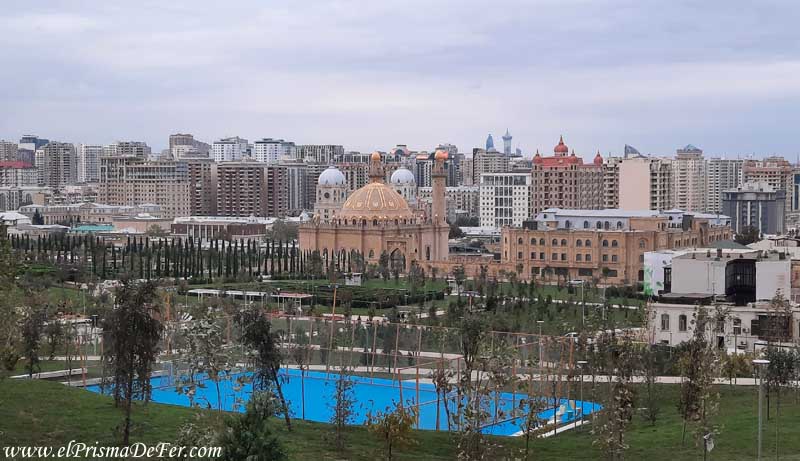
Winter Park and modern Baku
Among the most pleasant spaces in the modern city is Winter Park, a large landscaped square surrounded by cafes, restaurants and elegant buildings.
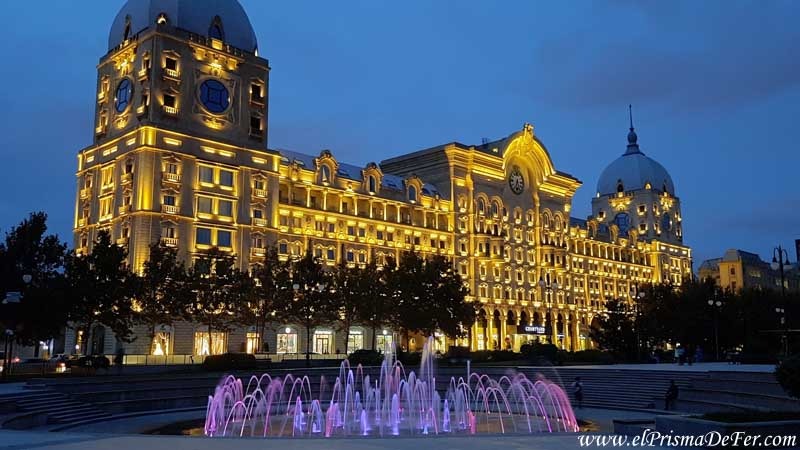
Its name may seem curious, but it's because it was inaugurated in winter, and today it's one of the favorite places to stroll or sit and enjoy a coffee outdoors.
The park represents the most contemporary and European face of Baku, clean, orderly, with a calm atmosphere that contrasts with the bustle of the historic center.
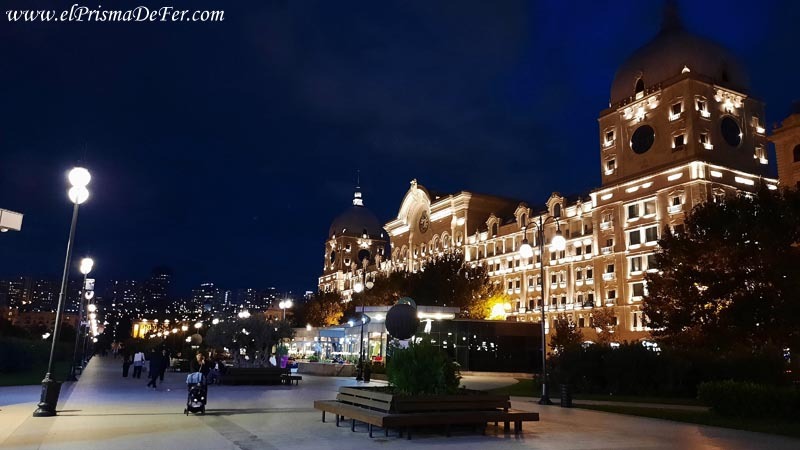
There are several bars and restaurants with terraces nearby, ideal for ending the day after visiting the city's main attractions.
The Heydar Aliyev Center
Another impressive place is the Heydar Aliyev Center, designed by the architect Zaha Hadid. Its futuristic structure, without a single straight line, seems to flow like a white wave in the middle of the city.

It is one of the most iconic buildings in the Caucasus, and inside it houses temporary exhibitions, rooms dedicated to the modern history of Azerbaijan and a display of classic cars.
Even if you don't go inside, it's worth going just to admire its design from the outside and walk through the surrounding gardens.
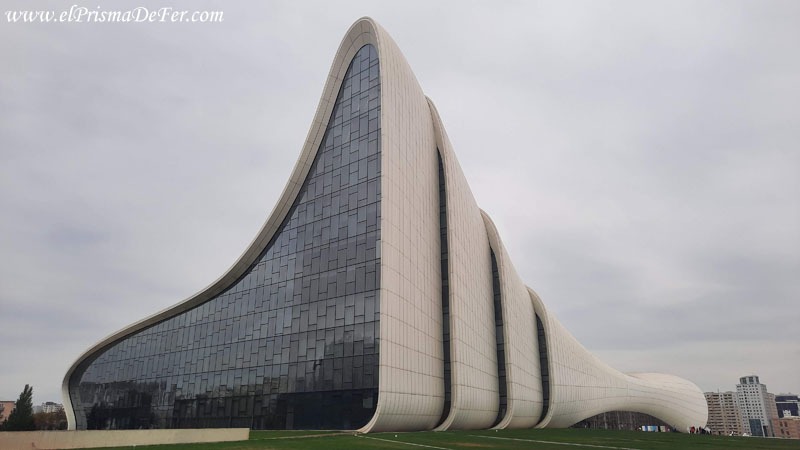
The National Museum of History
Of all the museums I visited along my Silk Road trip, the National History Museum of Azerbaijan was one of my favorites.
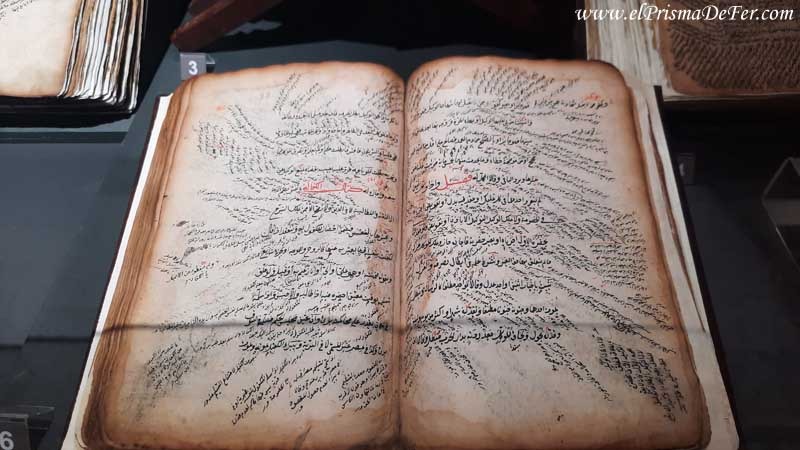
It is located within what was once an oil tycoon's palace, an impressive mansion that combines European luxury with oriental details.

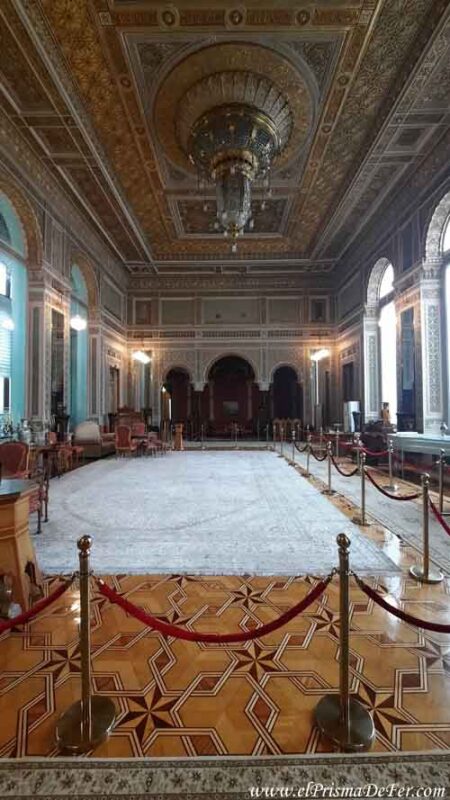
The tour is very well organized and features a chronological exhibition that goes from prehistory to the modern era, passing through the Persian, Arab, Russian and Soviet periods.

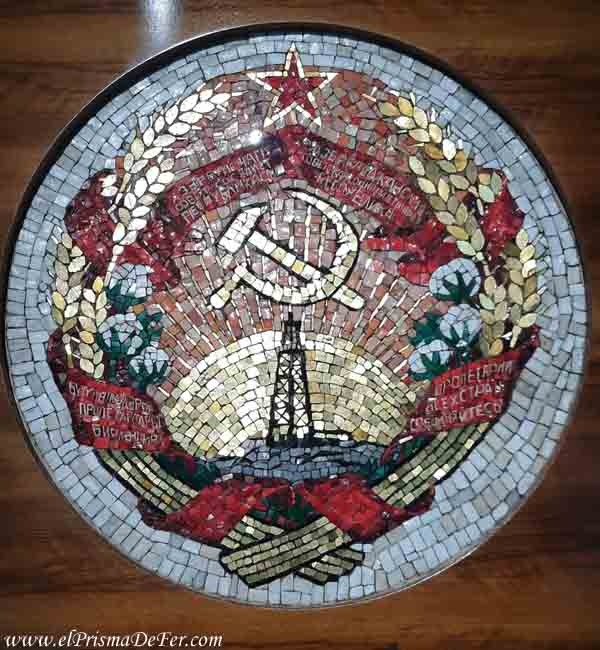
Beyond the archaeological pieces, what I liked most was how the museum manages to tell the story of a country little known to us in a clear and visual way, helping to understand its identity between Asia and Europe.
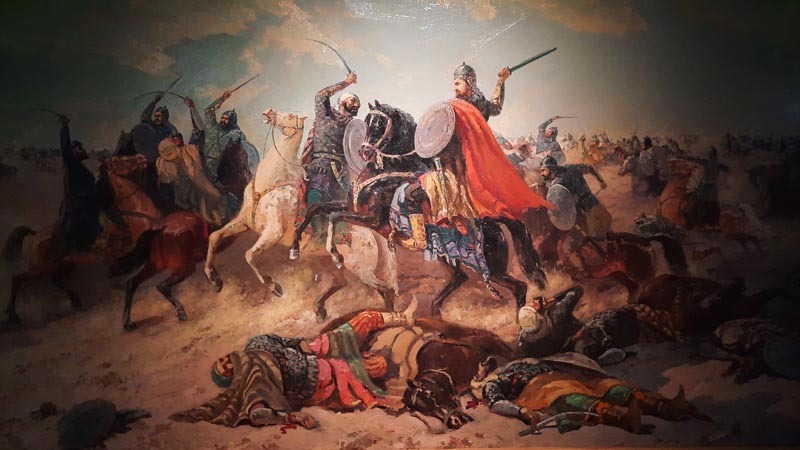
Formula 1 in Baku
One of the most important events held each year in the Azerbaijani capital is the Formula 1 Azerbaijan Grand Prix. Since 2017, the streets of Baku have been transformed into a street circuit that combines speed, history, and modern scenery, making it one of the most spectacular tracks on the calendar.
If your visit coincides with the race, you're in luck. You'll notice the festive atmosphere that takes over the city. Hotels, bars, and restaurants fill up with fans from all over the world, and the waterfront becomes an ideal meeting point to enjoy the event or simply soak up the surrounding vibe.
Getaways from Baku
While Baku has much to offer, one of the best parts of the trip is exploring the city's surroundings, where you can discover desert landscapes, ancient temples, and unique archaeological remains.
Gobustán and its petroglyphs
One of the most fascinating places to visit from Baku is Gobustan National Park, famous for its thousands of petroglyphs carved into rock, some over 10,000 years old.
These depictions show hunting scenes, ritual dances, and animals, offering a direct window into the prehistoric civilizations that inhabited the region.
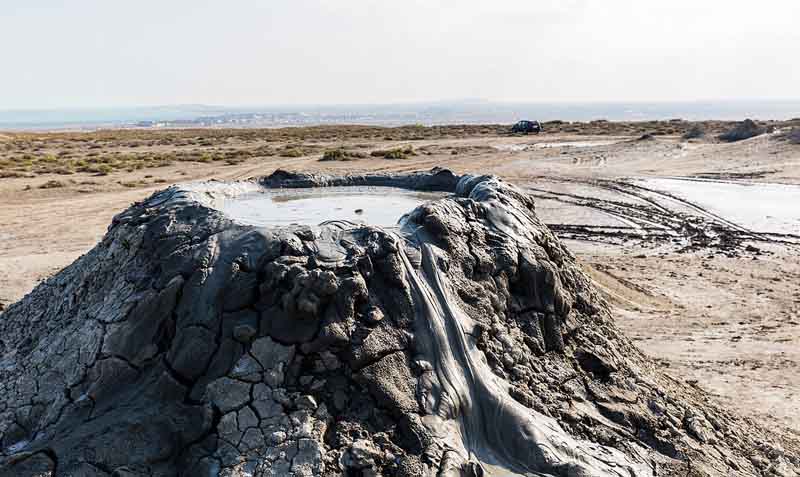
Nearby are also the Gobustan mud volcanoes, a unique natural phenomenon that can only be seen in a few places in the world. They are constantly bubbling mud cones, driven by underground gases.
Getting there independently isn't easy, as public transport doesn't go directly to the park. The most common (and recommended) option is to hire a tour from Baku, which usually includes transport, a guide, and a visit to both the petroglyphs and the volcanoes. Prices are quite reasonable, and the experience is well worth it.
The Temple of Fire (Ateshgah)
On the outskirts of the city is the Ateshgah Fire Temple, one of the most mystical sites in Azerbaijan.

Built in the 17th century over an ancient natural gas spring, it was a place of worship for Zoroastrians, Hindus and Sikhs.
The flames that naturally erupted from the ground led to it being known as "the house of eternal fire".
Today, although the fire is fueled by artificial gas, the place retains a spiritual atmosphere and has a small museum that explains its history and the different religions that passed through there.
North excursion: Candy Cane Mountains, Khizi and Shahdag
Another popular excursion from Baku is to the north, a region where the desert blends with colorful mountains, green valleys, and mountain air.

The first stop is the Candy Cane Mountains, geological formations that look like they were painted by hand. Along the way, it's common to stop to take photos and enjoy the tranquility of the place.
The route continues towards the Khizi district, a greener and more mountainous area that contrasts completely with the previous landscape. Here, the forests and rural villages typical of northern Thailand begin to appear. Many tours make a short stop for lunch or to visit viewpoints with spectacular vistas.
The tour ends at the Shahdag Mountain Resort, one of the most important ski resorts in the Caucasus. In winter it offers slopes and snow activities, while in summer it transforms into an ideal place for hiking, riding chairlifts, or simply enjoying the fresh mountain air and tranquility.
This tour can be done in a day from Baku (about 10 to 12 hours in total), although if you have more time, it is worth spending the night in Shahdag or in the nearby city of Qusar to calmly enjoy the surroundings.
Yanar Dag, the “burning mountain”
Another interesting stop is Yanar Dag, known as the “burning mountain”. It's a hill that continuously emits natural fire due to gas seeping from underground. The spectacle is especially impressive at night, when the flames illuminate the surroundings.

As with Gobustan, the most practical way to visit Yanar Dag is through an organized tour, as there is no direct transport and it is usually combined with the fire temple in a half-day excursion.
Activities organized from Baku
Where to stay in Baku
Most travelers choose to stay in the center or near the Old Town (Icherisheher), as from there you can walk to almost all points of interest. It's also a vibrant area, full of cafes, restaurants, and charming boutique hotels with a local feel.
I stayed at the King Hostel, in the historic center. It was affordable, had a great atmosphere, and a perfect location.
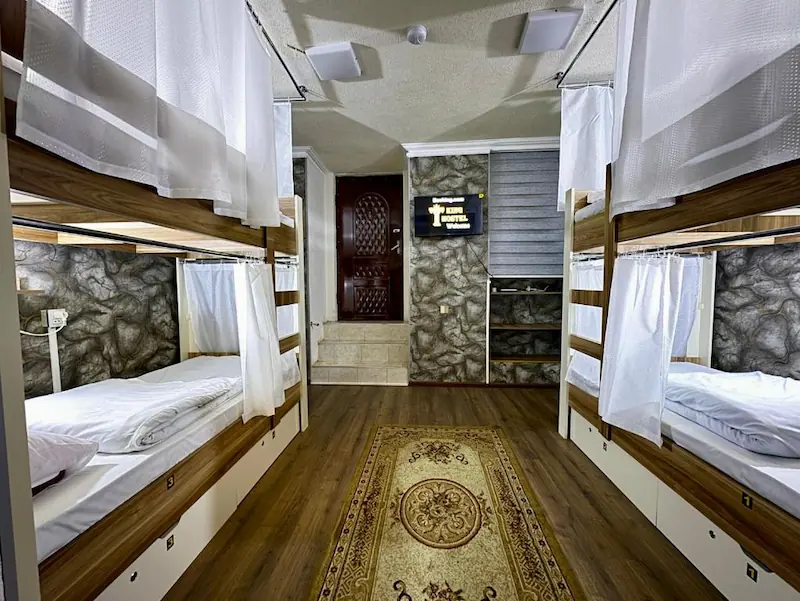
If you prefer something more modern, the area around Fountain Square and Nizami Street offers a wide variety of hotels, apartments, and leisure options, with a more cosmopolitan atmosphere.
On the other hand, for those seeking sea views and tranquility, the area around Baku Boulevard is ideal, with mid-range and high-end hotels.
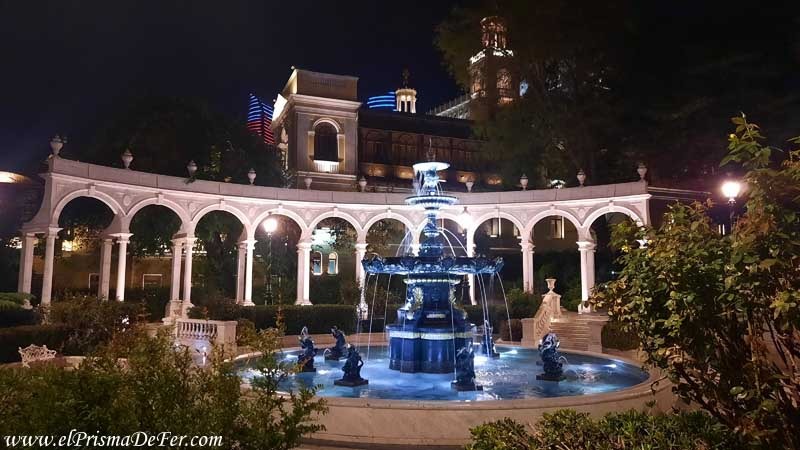
In general, accommodation in Baku offers good value for money, and comfortable rooms can be found for much less than they would cost in a European city.
How to get around Baku
Baku is a very easy city to explore, especially its city center. Most of the main attractions are close to each other, especially around the historic center and the seafront promenade, so much can be done on foot.
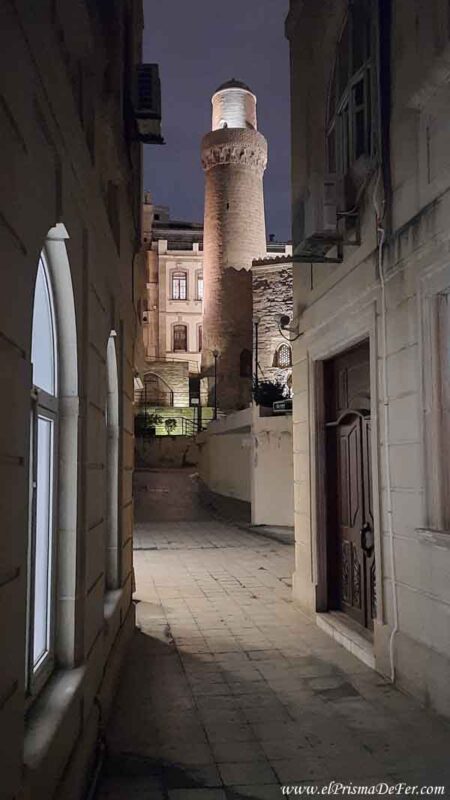
Public transport
For longer distances, the city has urban buses and an efficient and economical metro network, although its coverage is somewhat limited for tourist areas.
To use public transport in Baku (including the airport Aeroexpress, city buses and the metro), you need to purchase a "BAKU CARD" multi-pass card at terminals located near the bus stops, outside the airport terminal exits.
A single card can be used by a group of travelers. You just need to top it up at the ticket vending machines.
Other means of transport
In practice, the most convenient option is usually to use taxis or apps like Bolt or Uber, which work very well and have low prices compared to other capital cities.
Another nice option is to rent a bicycle or electric scooter to get around Baku Boulevard or the more modern areas, where the streets are wide and safe for cycling.
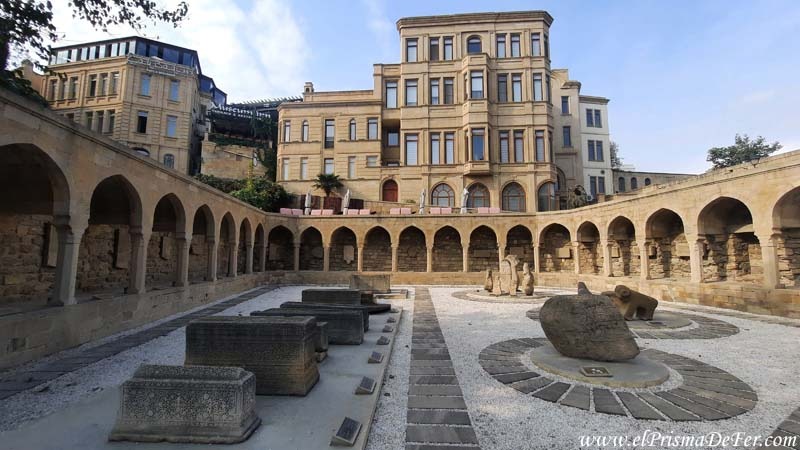
How to get from the airport to the city center
The Heydar Aliyev International Airport is located about 25 kilometers from the center of Baku, and getting there is quite simple.
By bus
There is an official bus called Aero Express, which connects the airport to the city center in about 40 minutes, with its final stop at the 28 May metro station (see location on map).
They run from 6:00 a.m. to 11:15 p.m. every 20 minutes, and from 11:15 p.m. to 6:00 a.m. the following day every 45 minutes.
The buses are comfortable, punctual, and an excellent option if you're traveling on a budget.
By Taxi or App
The most practical option is to take a taxi or a ride-hailing app (Bolt or Uber), which takes between 25 and 35 minutes, depending on traffic, and costs between 10 and 15 manat (a few dollars).
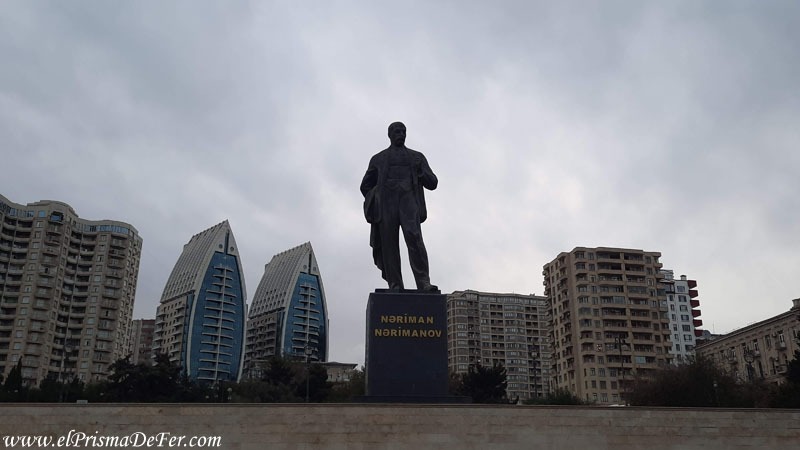
Best time to visit Baku
The best time to visit Baku is between April and June, or between September and October, when temperatures are mild, the days are long, and the wind, which can be quite strong in winter, feels gentler.
During the summer (July and August) temperatures can easily exceed 35°C, and although the sky is usually clear, the heat and humidity from the Caspian Sea can make walking around the city exhausting.
In contrast, winter (December to February) is cold, windy and has short days, so it's not the best season for outdoor exploration.
Is it safe to travel to Baku?
Yes, Baku is a very safe city to travel to, even if you do it on your own. The capital of Azerbaijan has a relatively low crime rate and a visible police presence, especially in tourist areas like the Boulevard, the Old City, and the Flame Towers.
The most common crimes are petty thefts, nothing very different from any other large city. Furthermore, the locals are generally very hospitable and used to receiving visitors, which further contributes to the feeling of safety.
As always, simply use common sense, keep an eye on your belongings in crowded places, avoid isolated areas at night, and use taxis or reliable apps to get around.
How many days to stay in Baku
To get to know Baku at a leisurely pace and enjoy both its history and its modern side, it is ideal to stay between 3 and 4 days. This amount of time allows you to explore the Old City thoroughly, visit the main museums, stroll along Baku Boulevard, and take a trip to the surrounding areas, such as Gobustan or the Fire Temple.
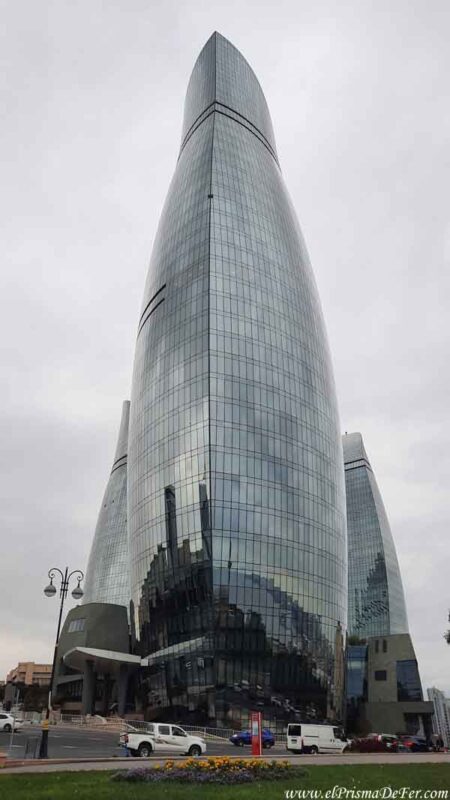
With two full days, you can see the essentials, although it may be a bit tight if you want to do it without rushing.
On the other hand, if you have five or more days, you will be able to delve deeper into the country's history, visit more museums, enjoy the local cuisine, and explore the desert landscapes and the Caspian coast at a more leisurely pace.
Final thoughts
Baku was one of the cities that surprised me the most on this trip, and without a doubt it's in my personal top favorites. It has that mix of European and Asian influences that makes it unique, both in its architecture and its people and pace of life.
Walking through its streets gave me the feeling of having arrived in Europe, but without losing the exotic touch and the oriental roots that make Azerbaijan a different country.
Baku is a city worth spending several days exploring at a leisurely pace and letting yourself be carried away by its atmosphere, which changes depending on the time of day and the neighborhood. By day, its coastline is bustling with life and its waterfront cafes; by night, its buildings are illuminated and its energy is vibrant.
Support The Prism of Fer!
Your support helps me continue creating free content on the blog. Thank you so much!


